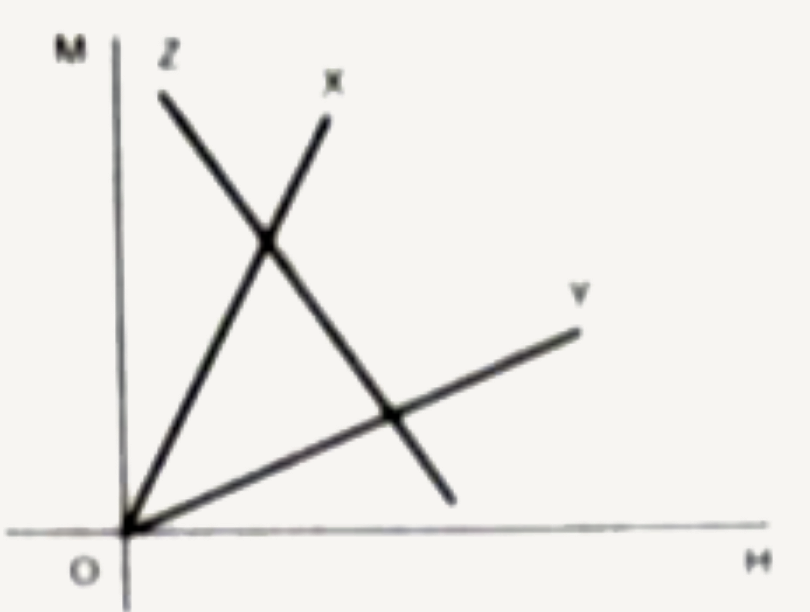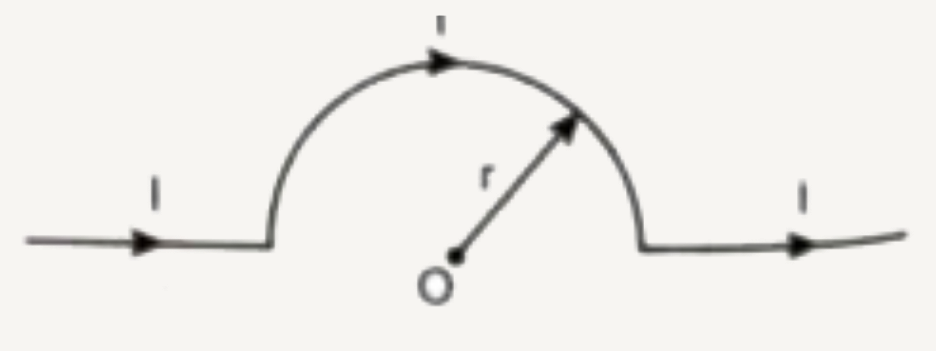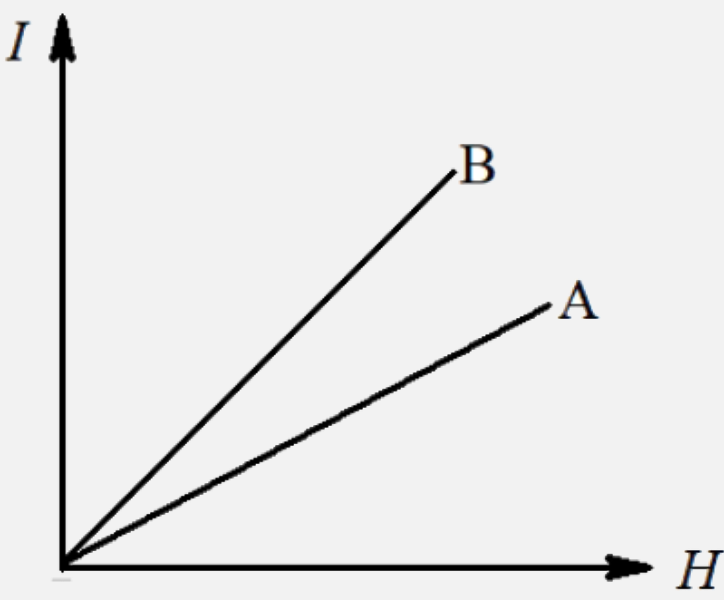The following figure shows the variation of intensity of magnetisation with the applied magnetic field intensity for three magnetic materials X, Y and Z. Identify the materials X, Y and Z.
 Solution in Tamil
Solution in Tamil
The slope of M-H graph measures the magnetic susceptibility, which is Xm=MH
Material X : Slope is positve and larger value So, it is a ferromagnetic material .
Material Y : Slope is positive and lesser value than X So, it could be a parmagnetic material.
Material Z Slope is negative and hence, it is a diamagnetic material .
Topper's Solved these Questions
- MAGNETISM AND MAGNETIC EFFECTS OF ELECTRIC CURRENT BOOK - FULL MARKSCHAPTER - MAGNETISM AND MAGNETIC EFFECTS OF ELECTRIC CURRENT EXERCISE - TEXT EVALUATION SOLVED
15 Videos
- MAGNETISM AND MAGNETIC EFFECTS OF ELECTRIC CURRENT BOOK - FULL MARKSCHAPTER - MAGNETISM AND MAGNETIC EFFECTS OF ELECTRIC CURRENT EXERCISE - TEXT EVALUATION SOLVED -SHORT ANSWER QUESTIONS
10 Videos
- ELECTROSTATICS BOOK - FULL MARKSCHAPTER - ELECTROSTATICS EXERCISE - ADDITIONAL QUESTIONS SOLVED ( VII. NUMERICAL PROBLEMS )
5 Videos
- OPTICSBOOK - FULL MARKSCHAPTER - OPTICSEXERCISE - ADDITIONAL QUESITON - II ADDITIONAL PROBLEMS:
11 Videos
Similar Questions
The magnetic field at the center O of the following current loop is ............ .

View SolutionWhat is meant by magnetic induction ?
View SolutionElectrons are caused to fall through a potential difference of 1500 volts. If they were initially at rest. Then calculate their final speed.
View SolutionLight from a point source in air falls on a spherical glass surface (n = 1.5 and radius of curvature = 20 cm ). The distance of the light source from the glass surface is 100 cm. At what position the image is formed ?
View SolutionIntensity of magnetisation of a magnetic material is defined as ……………..per unit……………..of the material.
View SolutionWhen a small magnetising field H is applied to a magnetic material, the intensity of magnetisation is proportional to:
View SolutionWhen a small magnetising field H is applied to a magnetic material the intensity of magnetisation (I) is proportional to:
View SolutionThe following figure shows the variation of intensity of magnetisation versus the applied magnetic field intensity, H, for two magnetic materials A and B : (a) Identify the materials A and B. (b) Why does the material B, have a larger susceptibility than A, for a given field at constant temperature?
View SolutionMagnetic field at a point a material is 0.02 T and the relative permeability of the material is 1.0001 . Determine the magnetic intensity H and intensity of magnetisation M at that point .
View SolutionThe following figure shows the variation of intensity of magnetisation I versus the applied magnetic field intensity H, for two magnetic materials A and B

Which of the material have a larger susceptibility for a given field at constant temperature?
View SolutionThe magnetic induction and magnetising field intensity in a sample of magnetic material are B and H respectively . The magnetic susceptibility of the material is
View SolutionTwo materials X and Y are magnetised, whose intensity of magnetisation are 500 A m−1 and 2000 Am−1, respectively. If the magnetising field is 1000 A m. then which one among these materials can be easily magnetized ?
View SolutionDraw the variation of magnetic field(B) with magnetic intensity(H) when ferromagnetic material is subjected to a cycle of magnetisation.
View SolutionFigure shows the variation of intensity of magnetisation vecM versus the applied magnetic field intensity vecH for two materials A and B: (a) Identify the materials A and B. (b) Why does the material B, have a larger susceptibility than A for a given field at constant temperature ?
View SolutionThe following figure shows the variation of intensity of magnetisation versus the applied magnetic field intensity, H, for two magnetic materials A and B : (a) Identify the materials A and B. (b) Why does the material B, have a larger susceptibility than A, for a given field at constant temperature?
View Solution
